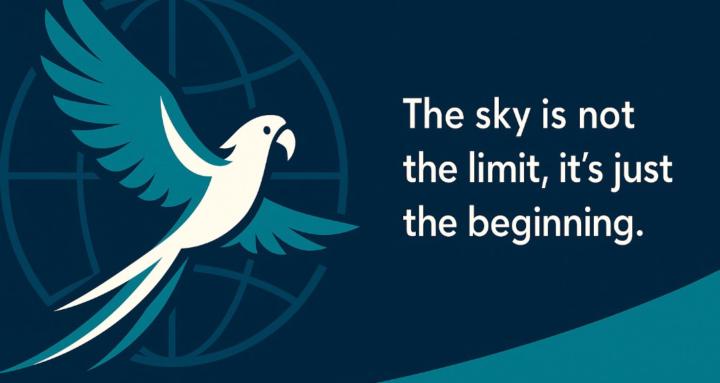Aug 19 • Safety & Ethics
Free-Flight Safety Checklist (Read Before Flying!)
Free-flight is beautiful, but it carries real risks. This checklist blends parrot training, falconry insights, and aviation-style risk control. Work through it before every outdoor session.
1) Foundations
- Flock bond: Your bird sees you as flock and safe base.
- Recall: 100% reliable indoors; whistle or cue paired with marker (“good!”/click).
- Feeding strategy: Indoors/crate/home = pellets + veg (e.g., Harrison’s). Outside = nuts/fruit only for recalls and voluntary returns.
- Health baseline: Vet cleared + weekly weight log to spot trends.
2) Outdoor Acclimation
- Regular crate/home time outdoors until bird is calm: eating, preening, relaxing.
- Crate/home always stocked with fresh water + pellets/veg so it feels safe and rewarding.
- Gradual noise exposure (cars, kids, dogs, wind, distant crows).
3) Site & Weather
- Home base: open sightlines, low canopy, away from roads/wires.
- Wind/thermals: Light breeze only; avoid gusts/mid-day thermals.
- Temperature guardrails (falconry-inspired): generally 5–28 °C (colder = calorie burn, hotter = overheating). Adjust by species.
- Sky scan before each flight (hawks, crows, dogs).
- Dusk rule: Always finish ≥2 hours before sunset so returns happen in daylight.
4) Session Flow
- Pre-check: Bird keen & responsive, environment secure, weather within limits.
- Short & calm: Early sessions = 2–5 minutes of hops/recalls.
- High-value pay: Nuts/fruit only outside. Pellets/veg = crate/home meals.
- End on a win: Invite back to crate/home → stocked with pellets/veg. Close calmly once inside.
- Never chase: Stay at home base; let the bird return by choice.
5) Risk Controls
- “Never one more try.” Stop before fatigue or frustration.
- Stress signals: panting, shaking, frantic scanning, refusal to eat = stop now.
- Distraction ladder: Empty field → light breeze → distant people/dogs → new-but-similar site → busier park. Only climb when recall is rock-solid.
- Flight log: Record date, site, wind/temp, reps, recall %, behaviour, lessons.
- Buddy system (optional improvement): When possible, have a second person — one flies, one scans. Not always doable, but safer when available.
6) Go / No-Go (pilot style)
Ask four questions before release:
- Bird ready? (keen, responsive, eating)
- Weather safe? (light breeze, 5–28 °C, good visibility)
- Environment secure? (clear sightlines, low distractions)
- Time buffer OK? ≥2 hours until dusk?👉 If any = No, session is No-Go.
7) Emergency Plan
- Whistle cue + lure food ready; crate/home nearby as safe anchor.
- If spooked: stay calm, stay put.
- If roosts overnight: do not chase. Return early next morning when hungry & calm.
- Use our Lost & Found template to alert the Crew.
8) Ethics & Boundaries
- Respect wildlife: no flushing wild birds or “stunts.”
- Legal compliance: check airspace + wildlife regs before flying.
- Harness note: If your bird accepts it, a harness or long line can be a valid stepping stone. In The Flight Crew, recall + flock bond are the only non-negotiables.
💡 Rule of thumb: If you’re unsure your bird is ready — they’re not.
Ask in the Weekly Safety Q&A before taking risks.
Fly safe — so our birds can fly free. ✈️🦜
— Steven
2
0 comments
powered by

skool.com/the-flight-crew-9880
Global free-flight parrot community for beginners & pros. Safety Q&As, flight logs, meet-ups, gear, and camaraderie for open-sky adventurers.
Suggested communities
Powered by
